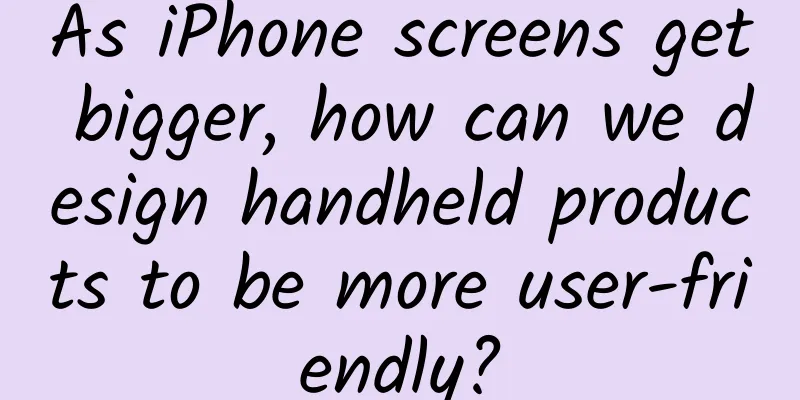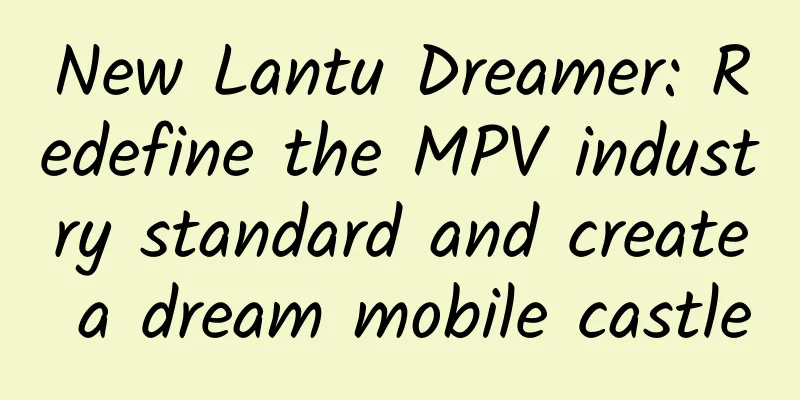As iPhone screens get bigger, how can we design handheld products to be more user-friendly?

|
With the end of the first wave of Android flagship offensive, the expectations of all walks of life for the new Apple iPhone are becoming stronger. After Tim Cook took over Apple, Apple's new product information has always been out of control. Although it is still several months away from the launch of the legendary iPhone 6, the news from all aspects has been exposed by the media. On the whole, it is probably difficult for the future iPhone to continue Steve Jobs' insistence on small screens. 4.7-inch or even larger touch screens will appear on Apple's smartphones. But just like we always hope that the processor has strong performance while reducing power consumption and heat, for handheld electronic products, the visual perception improved by increasing the size and the convenience of manual operation are always a pair of deadly enemies, so the humanized design of the product is particularly important for the current handheld smart terminals. Ultra-narrow bezel: It just looks beautiful . With the popularization of touch interaction methods of smart operating systems, whether it is Android or Windows, the screen of handheld electronic devices has already occupied the most important part of the front of the machine. Among the representative products, the "running horse" frame of Xiaomi 3 and the "long chin" of most Sony Xperia smartphones have always been criticized by consumers. The concept of "screen-to-body ratio" on the front of the machine has gradually become an important factor in measuring the industrial design of modern products. Smartphones have physical structures such as earpieces and sensors at both ends. If you want to increase the screen-to-body ratio, cutting the frame has become the unanimous choice of many manufacturers. The first to make a deep impression was Samsung's 2013 flagship Galaxy S4. Although the screen size has increased compared to the S3, thanks to the narrower screen frame design, the overall size of the machine is the same as the previous generation. The subsequent LG G2 did a more thorough job, distributing the touch sensor line receiving components that run on both sides of the screen from the original placement below the screen to the upper and lower parts of the screen, reducing the number of lines in the screen frame range, and further making the screen frame the world's largest 2.65mm, making the "screen-to-body ratio" as high as 75.9%, and the overall width of the 5.2-inch screen product is also maintained at around 70mm, which is equivalent to the 5-inch model. The narrow frame design does neutralize the conflict between the large screen and one-handed grip to a large extent, but whether the screen is getting closer to the edge of the phone can bring a better operating experience is indeed a question worth discussing. Nowadays, mobile apps are becoming more and more innovative, and interactive methods such as swiping out menus from the edge of the screen have become a good idea for many well-known apps, but for ultra-narrow frame machines, the design with almost no frame area for you to "swipe" is not comfortable to use in these situations. Considering that many users like to put "cases" on their phones to protect their beloved phones, take the Google Nexus 5 that I use myself as an example. In fact, the frame is far from being ultra-narrow, but after putting on the "case", there is a circle of protective case protrusions around the machine, which makes it more difficult to operate using the edge of the screen. In the field of tablet computers, except for Apple iPad, which has false touch recognition for the edge screen, no product can really carry the banner of "narrow frame" design, but due to different system characteristics, Microsoft Surface's "huge" frame can also bring a comfortable operating experience, and as for whether other narrow-framed products that look beautiful can add points to the experience, there is no way to know. Curved design: Feel is more important than thickness Whether it is an ultrabook or a smart phone, breakthroughs in the thickness of electronic products always attract attention from all walks of life in the industry. However, the thickness of HTC One, which shoulders the heavy responsibility of reversing the fate of the company, exceeds 9mm, and the thickness of MOTO X, which has been silent for a long time, has reached more than 10mm. Motorola, which is a "blade", does not pursue "ultra-thinness" because they all value an element that can better affect the user's grip - the curved design. Although the 2.5D curved screen of Nokia N9 in the early years felt great, not many manufacturers were willing to follow suit and customize protective glass for a certain product. Instead, the back cover of the machine that directly contacts the user's palm can better reflect the humanization of the curved design and has become the focus of design for major brands. There are many benefits of the curved back design, one of which is that it makes the machine fit more firmly in the palm of the hand, which is especially important for today's increasingly larger smartphones. In addition, the curved back makes the thickest part of the machine concentrated in the middle of the product, and the size of the two sides is tightened, so the machine does not feel bloated intuitively, which is why the HTC One does not look too thick, and the design is very clever. The curved back cover also brings more space inside the machine. The domestic and international versions of LG G2 use the protrusion of the back cover to design the battery into a two-stage ladder shape, and the capacity is increased to a considerable 3000mAh. However, such irregular shapes of batteries and other components will also increase the cost of the product. Even though there are many products with curved back covers now, only LG has product practice in this regard. Looking back a few years ago, Motorola's first generation of RAZR series smartphones were not comfortable to hold in the hand due to their tough and very thin design. Now, the curved design on the side of some products can also solve the "cutting hand" problem caused by ultra-thin design to a certain extent. The most representative of these is Nokia's Lumia series, but the design of Lumia is really too thick. The soft design style does not make the phone look very colorful except for the colorful color matching. Button position and UI interaction: How to solve the problem of use After discussing the problem of hand feel and grip, smartphones are getting bigger, and many brands are also working on the position of the few physical buttons on touch-screen phones. Among them, LG is particularly unique. From G2 to G Pro2, LG seems to continue the design of the back button. Although in the experience of daily calls, this concept is very consistent with the position of human fingers under normal circumstances, it is not an advantage in other situations. It can only be regarded as a mixed design. As the size of mobile phones increases, more and more products move the power unlock button to the right side of the body, closer to the position of the right thumb. Sony is the most beautiful in this idea. The combination with the traditional mechanical watch button design makes the power button a very unique detail. For example, Google Nexus5 adopts a symmetrical design for the power button and volume button, which can quickly take screenshots under the Android system, which is also a humanized consideration. But we also find that there are still flagship products that place the power button on the top of the "high and mighty", including the HTC M8 with an extremely slender body released not long ago. Is this a lack of ambition in design? In fact, it is not, because including HTC, many manufacturers have natively supported the "double-click screen unlock" function when the screen is off for their main products. What's more, some manufacturers have added screen gesture operations to quickly open applications when the phone is off, which directly enhances the convenience of human-computer interaction. In terms of system UI design, whether it is Samsung Galaxy Note or domestic BBK Vivo Xplay, one-handed mode has almost become the standard for large-screen mobile phones. In addition to the offset of the virtual keyboard position, some systems also support proportional reduction of the large-screen interface, but only a part of it is truly usable on the large screen, which still looks a bit awkward. Can the large-screen iPhone bring us new surprises? Apple fans often ridicule Android's system lag and talk about the fragmentation of system versions, but as far as large-screen mobile phones are concerned, let alone Android, Apple and iOS are both outsiders compared to Windows Phone. After iPhone5, although Apple's smartphones increased the screen size by 0.5 inches, it was also based on the fact that the screen width remained unchanged and the resolution was improved vertically. In addition, the stubborn "Back" button in the upper left corner of the screen has always been quite "unnatural" for most users who are accustomed to operating their phones with their right hands. In this regard, Android's native virtual buttons are much better. The problem of software limiting screen resolution has always been an invisible flaw of Apple's iOS devices. We have experienced a situation where the screen resolution has regressed in the first generation of iPad mini. With the appropriate increase in the size of the iPhone screen, will Apple give up on increasing the resolution while users are reluctant to accept the fineness of the screen? From various perspectives, this possibility is still quite high. The appeal of the new iPhone to the market is self-evident. A number of large-screen Android phones led by Samsung Galaxy Note and Nokia Lumia 1520 have taken the lead in delivering answers for the Android and Windows Phone camps in the field of large-screen mobile phones. The "three-legged tripod" situation of smartphones will be fully expanded. What will be the result of the iPhone's "enlargement" will undoubtedly have an important impact on the iOS ecosystem and the mainstream smartphone industry. As a winner of Toutiao's Qingyun Plan and Baijiahao's Bai+ Plan, the 2019 Baidu Digital Author of the Year, the Baijiahao's Most Popular Author in the Technology Field, the 2019 Sogou Technology and Culture Author, and the 2021 Baijiahao Quarterly Influential Creator, he has won many awards, including the 2013 Sohu Best Industry Media Person, the 2015 China New Media Entrepreneurship Competition Beijing Third Place, the 2015 Guangmang Experience Award, the 2015 China New Media Entrepreneurship Competition Finals Third Place, and the 2018 Baidu Dynamic Annual Powerful Celebrity. |
<<: Smart TVs are popular but not popular, so the interactive mode needs to be solved
>>: Central Bank Governor: Bitcoin is not a currency, so how can it be banned?
Recommend
Witnesses, not just stones
Witnesses Are Not Just Stones Author: Mao Ning Sc...
Memory/SSD prices are skyrocketing! Will there be no price reduction this year?
At the beginning of the new year, among all DIY h...
Why is the promotion still ineffective even though the advantages are used as selling points?
We often say that before promoting a new product,...
If you can’t stop watching short videos crazily, does that mean your brain is “getting bored with the same old thing and liking the new”?
□ Luo Mingjun On the streets and subways, teenage...
What does iOS 8 mean for app design?
Although the interaction design of iOS 8 is simil...
Shock! The fatal danger behind Sichuan and Chongqing's "red" glutinous rice balls, do you still dare to eat them?
There is a saying in some areas of Sichuan and Ch...
Analysis of the marketing strategy of the wedding photography industry
Target: A national wedding photography chain clie...
Baidu Search oCPC Product Manual
This article shares with you the latest "Bai...
8 things independent developers should know before entering the industry
[[153964]] About five months ago, I decided to qu...
How to become a top coder in three years
In a typical intellectual industry like programmi...
Nongfu Spring Advertising and Marketing Guide!
How important is the slogan? This article explain...
100 information flow rankings: Video leads the ranking and has the highest traffic growth!
Today I will share with you an APP heat index rep...
The road to "customized marketing" for online education in 2020
The battle for customer acquisition in online edu...
Google adds new call status bar indicator to Android 12
Google recently pushed the Android 12 Beta 2 upda...
What does China National Grain and Oils Corporation say in response to the ban on outsiders bringing mobile phones into grain depots?
On the evening of August 2, the China National Gr...


![Tik Tok Hot Content Increase Follower Course [Taught by the Venomous Tongue Movie Partner]](/upload/images/67cc2fc11ad3a.webp)






